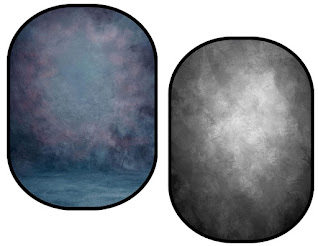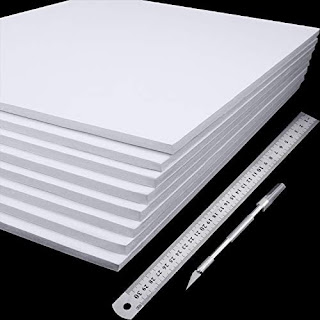22. Studio Set up 1: Standard Equipment
This lesson comes from notes taken from videos by Ed Verovsky, Daniel Norton, Gavin Hoey, Lindsey Adler, Manny Ortiz, and Tony Gale.
Daniel Norton starts off this lesson with a list of basic equipment that every studio should have:
Tripods:
These help steady your camera to reduce shake and blur in darker studio settings. Be sure to turn off the "stabilization" button on your lens, or the button could actually make the lens less stable, and more likely to blur the image.C-Stands:
These are for mounting lights, cameras, and other things. You can add arms, or "booms", to them. You can hold things on them with clamps. The "C" stands for "century", which was a kind of sun reflector used in early filmmaking.
NOTE: These can be dangerous. Never loosen any part of it, without using your other hand to hold the stand steady. You don't want it to drop suddenly, or it could hit your head, or pinch your fingers.
Step Ladder:
These are great for raising your camera to new heights, for the right vantage angle to capture your model. You can also clamp little booms and arms to ladders and use them like a tripod to attach to your camera.Sandbags:
These are a safety precaution. You place them on your C-stands (and other stands), so they don't fall over and hit someone. Always put sandbags on your C-stands!
Clamps:
These helps hold things in place for your photo shoot. You will want a half a dozen "A clamps" and a couple "super clamps".
Auto-poles:
These are great for holding up backdrops, and you can place them very close to walls. Get two with a crossbar to hold up your backdrop.
Paper Backdrops:
Saw Horses & a Plywood Top:
This system often works better than a table for product/still life photography because it's easier to adjust the height, and it's very strong. It might not look pretty, but you can always throw a tablecloth over it, or some other textured surface.
Apple Boxes:
Traditionally just crates made to hold apples, today's photo studio "apple boxes" don't hold apples. Instead, they are used as chairs, tables, stepping stools, etc. They are designed to be very strong. You can stack them however you wish, just be careful they don't fall over. You can put different textiles over them, like table cloths or curtains. You can have your model sit or stand on them. It's useful for photographing couples, if one person is much taller than the other. It's great for photographers to stand on to change their camera angle - just like a step ladder, only apple boxes are easier to move around. You can use them as a table for still lifes. They're a great way to set up and adjust your studio composition.
Gaffer's Tape:
A gaffer is the lead electrician on a movie set. Gaffer's tape is great for holding things in place, temporarily. It's not too strong, but it's sticky enough to be reused. It's also nice to mark on the floor to show a model exactly where to stand or walk.
Extension Cords
Sometimes you need electricity and the wall sockets are too far away. Be careful not to set these where someone might trip over them. If it's going to be on the floor for a long time, consider taping it down with gaffer's tape.
Light Meters
Light meters help you find a good exposure setting for your scene. They can be used in a studio and out on location, and high quality ones can be more accurate than the one built into your camera. Daniel Norton explains how to use them here:
Grey Cards:
These help you set the brightness levels for your camera in a studio.
Velon Taffeta:
This is a black curtain that can be draped over windows to help control studio lighting.
Collapsible Backdrops:
These fold out and can hang on C-stands. They come in a variety of abstract patterns and colors to provide a bit of mood and depth to your backgrounds.
White Foam Core:
This material is a cheap, light-weight alternative for photo backgrounds, especially for still lifes. It's soft reflective surface can brighten an object. Meanwhile, it can also block unwanted light and reflections from the rest of the room. It's common practice for product photographers to place foam core on all four sides of the products to be shot.
Fans/Leaf Blowers:
These are if you want someone's hair blowing, etc. Be careful not to stand too close with long flowing clothes, or it can get sucked in.




















Comments
Post a Comment